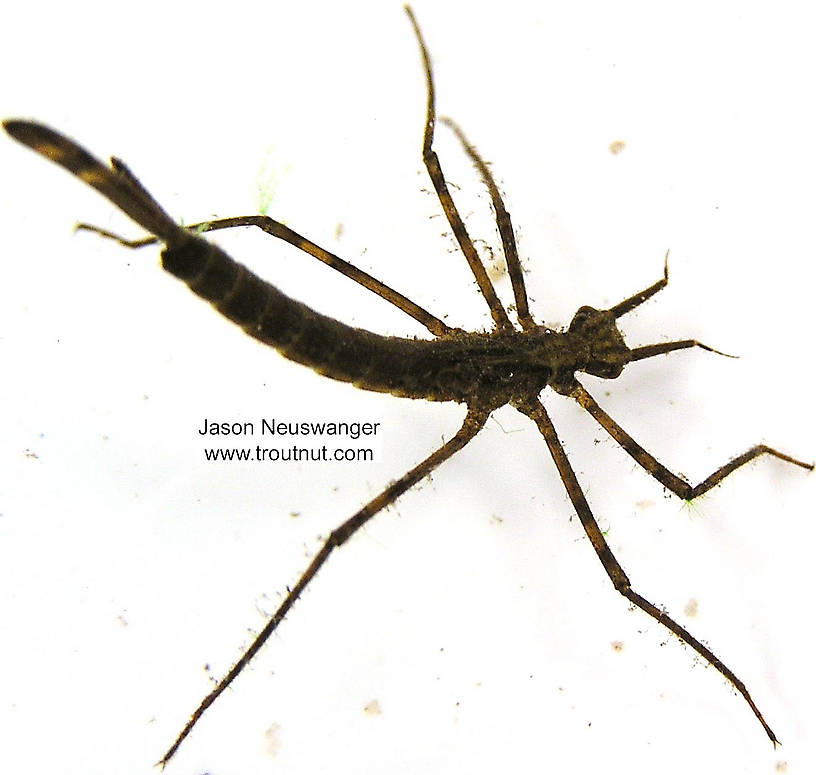
Hex Mayflies
Hexagenia limbata
The famous nocturnal Hex hatch of the Midwest (and a few other lucky locations) stirs to the surface mythically large brown trout that only touch streamers for the rest of the year.
Featured on the forum

This one pretty clearly keys to Kogotus, but it also looks fairly different from specimens I caught in the same creek about a month later in the year. With only one species of the genus known in Washington, I'm not sure about the answer to this ID.

Troutnut is a project started in 2003 by salmonid ecologist Jason "Troutnut" Neuswanger to help anglers and
fly tyers unabashedly embrace the entomological side of the sport. Learn more about Troutnut or
support the project for an enhanced experience here.
Waxsmith on Mar 18, 2012March 18th, 2012, 5:32 pm EDT
I have diddled and fiddled to produce decent damsel nymphs for some time now and it is tough to come with up something good either impressionistic or realistic. The one thought, when I watch them move in their environment,is always that they are very sparse predators. So whatever I tie, and it always seems to be an improvement over previous productions, is something slim. Good thing fish often are not too fussy.
Greetings, A.K.
Greetings, A.K.
What is this supposed to look like, example please.


